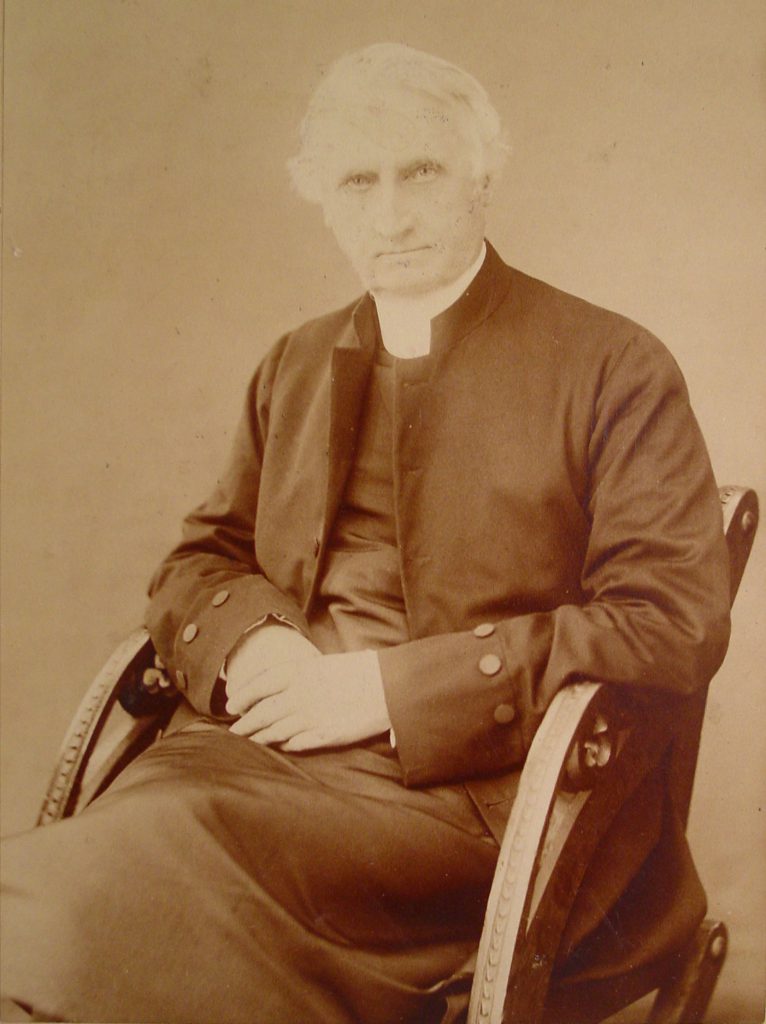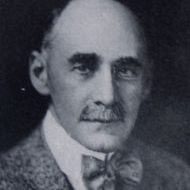Right Reverend George Hills, Doctor of Divinity and Anglican Lord Bishop of British Columbia.
Bishop George Hills was born in 1815 in the village of Eythorne, near Dover in Britain. He was ordained a minister in the Church of England in 1840 and, on 24 February 1859, was consecrated as Bishop of the newly formed Anglican Diocese of British Columbia. Bishop Hills arrived in Victoria on January 13, 1860 and remained as Bishop of British Columbia until his return to England in November 1892. His tenure as Bishop was an active one; among other things he began construction of the second Christ Church Cathedral in Victoria in 1872.

Bishop Hills is probably best remembered in Victoria history for a theological dispute with his subordinate at Christ Church Cathedral, the Reverend Edward Cridge. The dispute was largely based on a conflict in the Anglican Church over “High Church” vs. “Low Church”. This conflict dated from the 16th century Reformation and was still a major issue in the Anglican Church during the 19th century. Followers of the High Church believed in established liturgies, church ceremony and a hierarchical authority leading the Church. Followers of Low Church doctrine disputed the necessity of liturgy, ceremony and hierarchical authority and favoured a simpler, less formal, manner of worship. Bishop Hills was High Church to his core; Reverend Cridge was fervently Low Church. Reverend Cridge objected to what he referred to as Hills’ “Roman” religious practices and, in 1874, Cridge went to an ecclesiastical court to challenge Bishop Hills’ authority as Anglican Bishop of the Diocese.
Cridge lost the case and Bishop Hills promptly asserted his authority by banning Reverend Cridge from conducting Anglican services in the Diocese. Reverend Cridge simply ignored the ban and further challenged Bishop Hills’ authority by continuing to conduct services at Victoria’s Christ Church Cathedral.
Bishop Hills responded by going to the secular courts, seeking an injunction preventing Reverend Cridge from conducting Anglican services in the Diocese. The case was argued before Justice Matthew Baillie Begbie, who, in a carefully reasoned decision, issued the injunction Bishop Hills sought against Reverend Cridge. Faced with Begbie’s injunction preventing him acting as an Anglican clergyman, Reverend Cridge left the Anglican Church and joined a new denomination, the Reformed Episcopal Church, in which he was promptly ordained a Minister.
In 1875, Reverend Cridge formed a new congregation, attracting about 250 former Anglican parishioners, including many of early Victoria’s most prominent families. To house his new congregation, Reverend Cridge built the Church of Our Lord, which still stands at the corner of Blanshard and Humboldt Streets in downtown Victoria, two blocks from the original site of Christ Church Cathedral, and which was declared a Canadian Heritage Site in 1999.
Here are some sites with more information on Right Reverend George Hills, Doctor of Divinity and Anglican Lord Bishop of British Columbia:
Would you like to leave a comment or question about anything on this page?
